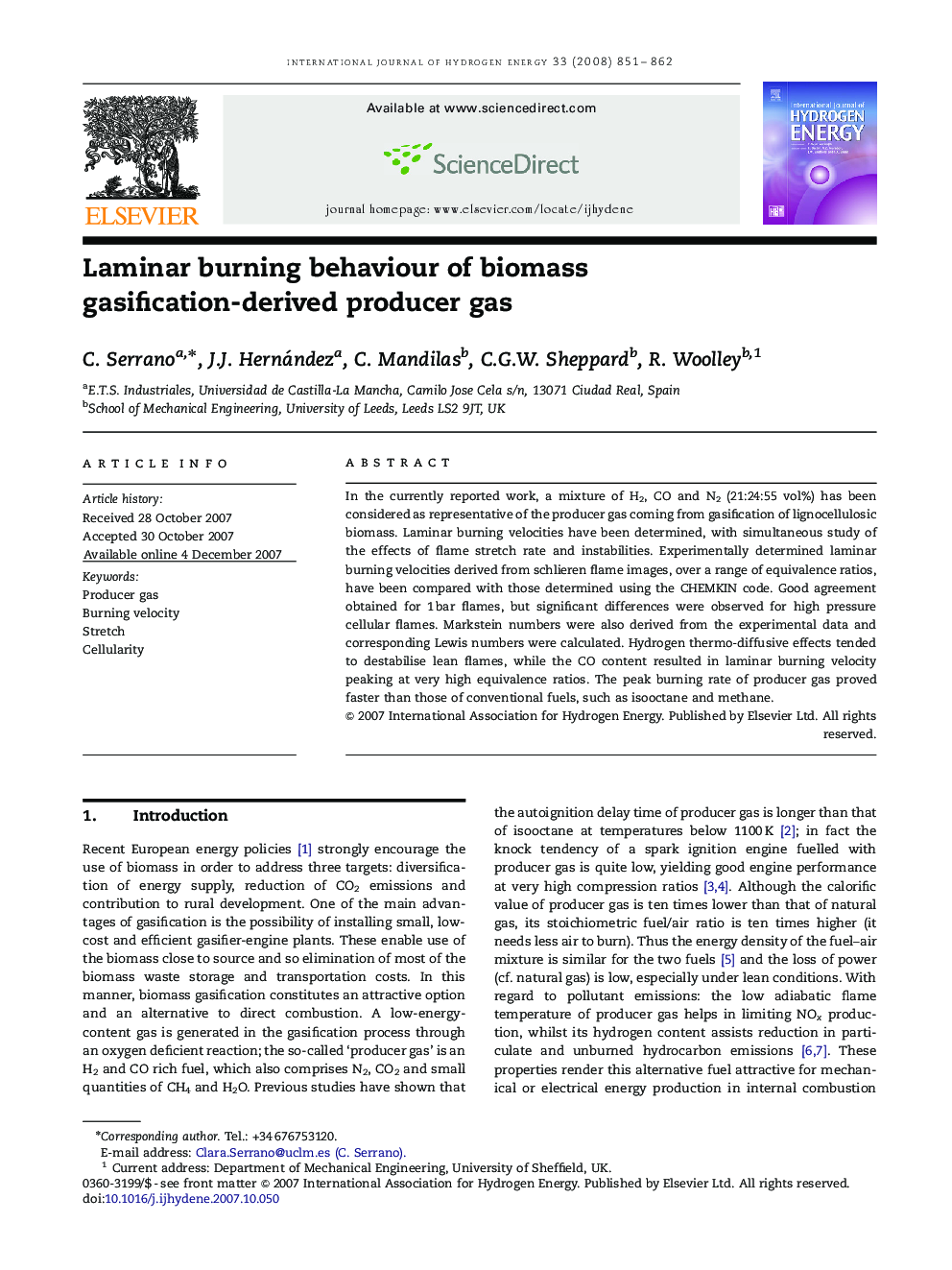| Article ID | Journal | Published Year | Pages | File Type |
|---|---|---|---|---|
| 1280016 | International Journal of Hydrogen Energy | 2008 | 12 Pages |
In the currently reported work, a mixture of H2, CO and N2 (21:24:55 vol%) has been considered as representative of the producer gas coming from gasification of lignocellulosic biomass. Laminar burning velocities have been determined, with simultaneous study of the effects of flame stretch rate and instabilities. Experimentally determined laminar burning velocities derived from schlieren flame images, over a range of equivalence ratios, have been compared with those determined using the CHEMKIN code. Good agreement obtained for 1 bar flames, but significant differences were observed for high pressure cellular flames. Markstein numbers were also derived from the experimental data and corresponding Lewis numbers were calculated. Hydrogen thermo-diffusive effects tended to destabilise lean flames, while the CO content resulted in laminar burning velocity peaking at very high equivalence ratios. The peak burning rate of producer gas proved faster than those of conventional fuels, such as isooctane and methane.
